Efficient Cleaning with Spray Mops and Microfiber Pads
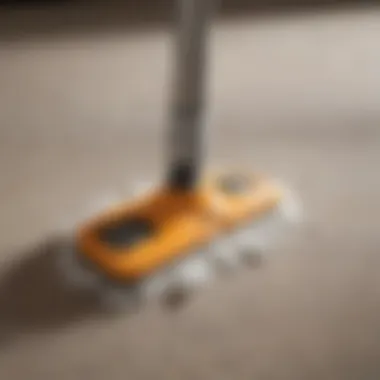
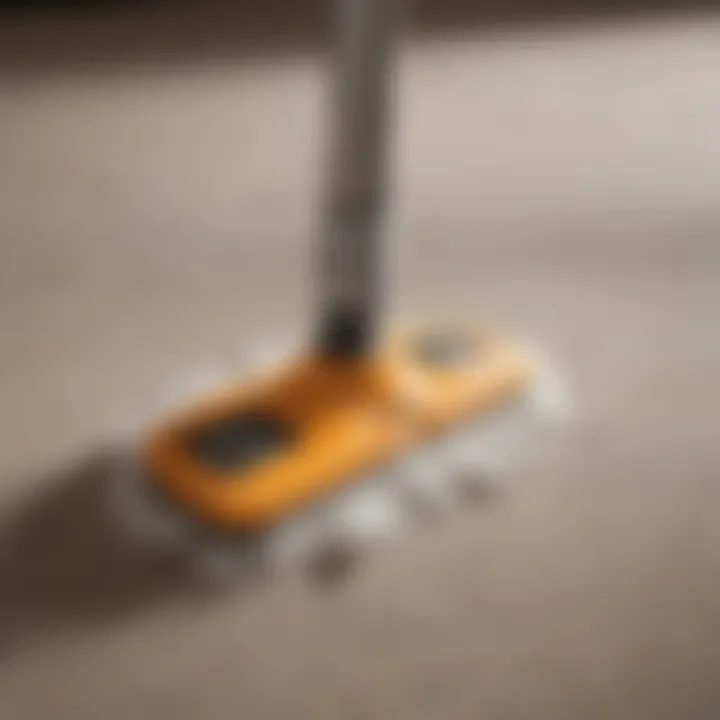
Overview of Topic
In the modern household, cleaning solutions have evolved significantly, and spray mops with microfiber pads are at the forefront of this evolution. Spray mops combine the effectiveness of traditional mopping with the innovation of modern cleaning technology. The design typically includes a durable handle and a refillable container that sprays cleaning solution directly onto the floor, making it easier to tackle messes with minimal fuss.
The importance of spray mops lies in their efficiency and convenience. They allow homeowners to maintain clean floors without the need for bulky buckets or excessive amounts of water. This method is not only time-saving but also promotes a more hygienic environment, as microfiber pads can effectively trap dust and allergens, reducing the amount of debris that gets stirred up during cleaning.
Common Challenges and Solutions
While spray mops offer various benefits, homeowners often encounter some common hiccups. One significant challenge is determining the right cleaning solution for various floor types, such as hardwood, tile, or laminate. Using an incompatible solution can lead to damage or inadequate cleaning results.
Solutions:
- Read Labels: Check product labels for compatibility with your flooring type.
- Use Distilled Water: For most surfaces, a mix of distilled water and a few drops of dish soap can work wonders.
Another issue is the longevity of microfiber pads. After numerous washes, they may lose their effectiveness, leading to reduced cleaning performance.
Solutions:
- Gentle Washing: Hand wash or use the gentle cycle on your washing machine when cleaning pads to maintain their fibers.
- Regular Replacement: Set a reminder to replace the pads every few months, depending on use frequency.
Product Recommendations
When it comes to selecting the best spray mops with microfiber pads, some products stand out in the market. Taking a closer look at these can help guide your purchase decisions.
- O-Cedar ProMist Max Spray Mop: This mop features a dual-sided microfiber pad, allowing for longer cleaning sessions without frequent changes. The mop’s reusable pad is machine washable and comes with a refillable spray bottle.
- Bona Hardwood Floor Premium Spray Mop: Designed specifically for hardwood, this mop uses a special cleaning solution that is safe for wood floors. Its microfiber pads are highly absorbent and trap dirt effectively.
Benefits and Features:
- Ease of Use: Lightweight design and ergonomic handle.
- Eco-Friendly: Washable pads reduce waste.
Step-by-Step Guides
To maximize your spray mop experience, following a systematic approach can save time and improve results. Here's a simple guide to get started:
- Gather Your Supplies: Ensure you have your spray mop, cleaning solution, and access to a sink for rinsing pads.
- Fill the Spray Bottle: Pour your chosen cleaning solution into the mop’s refillable bottle.
- Prep the Area: Clear the floor of any large debris or obstacles that might hinder cleaning.
- Start Mopping: Press the trigger to spray lightly on the floor. Move the mop in an 'S' pattern for thorough coverage.
- Rinse the Pad: Every few rooms, rinse the microfiber pad under lukewarm water to remove built-up dirt.
- Regular Maintenance: After cleaning, rinse the pad and store the mop in a dry area to maintain its functionality.
"Embracing the convenience of spray mops can transform your cleaning routine, making it less of a chore and more of a breeze. Remember, the right technique and care for your tools yield the best results."
By following these guidelines, you'll ensure that your cleaning routine is not only effective but also enjoyable.
Prologue to Spray Mops
Understanding the realm of cleaning solutions goes beyond just picking up a broom or grabbing a mop. Enter the spray mop, a modern marvel that combines convenience with efficiency. This section lays the groundwork for why spray mops warrant a close look, especially for those striving for spotless homes without diving head-first into tedious cleaning routines. They present a blend of practicality and technology that transforms how we approach everyday chores.
The use of spray mops represents a shift in cleaning culture. Instead of lugging a heavy bucket and traditional mop around, homeowners are embracing tools that simplify the process while delivering excellent results. With a spray mop, you get an all-in-one approach—cleansing solution and cleaning pad in a sleek package. This not only saves time but also cuts down on the number of products you need to buy and store.
In this journey of exploration, we will delve into what defines spray mops, how they have evolved, and why they now sit at the forefront of modern cleaning methods.
Defining Spray Mops
Spray mops are, at their core, a fusion of a traditional mop and a spray bottle. The design typically consists of a handle, a cleaning pad, and a reservoir that holds your choice of cleaning solution. Once you pull a trigger or press a button, a fine mist is released, allowing you to clean and sanitize your floors with minimal effort.
However, their appeal goes beyond functionality. Often made with lightweight materials, they are designed to be user-friendly, making them an attractive option for busy households.
"A spray mop is not just a tool; it’s an efficient partner in your quest for cleanliness."
Evolution of Cleaning Tools
Looking back, cleaning has always involved heavy lifting—literally. Traditional mops were cumbersome, requiring significant effort to wring out excess water and navigate corners. But the evolution didn’t happen overnight. Over the decades, cleaning tools have undergone significant changes, propelled by advancements in materials and an understanding of ergonomics.
From rags used in ancient times to the modern-day spray mops, the focus has shifted toward making the process seamless. The introduction of microfiber technology has revolutionized our approach to cleanliness. Microfiber pads allow for better absorption and less effort in removing dirt and grime. This exemplary evolution illustrates how cleaning tools adapt to fit the needs of increasingly busy lifestyles, making life a bit easier for everyone, especially housewives and homeowners aiming for cleanliness without the hassle.
Understanding the Mechanics of Spray Mops
Understanding the mechanics of spray mops is like pulling back the curtain on a well-orchestrated performance. It lays bare the nuts and bolts that enable these innovative cleaning tools to deliver the kind of results that have made them popular among many homeowners today. Spray mops effectively combine the functions of spraying cleaning solution and wiping floors, which saves both time and effort. In this section, we’ll dissect the components that make up a spray mop, highlighting each part's significance, along with how they work in synergy to provide a seamless cleaning experience.
Components of a Spray Mop
Handle
The handle of a spray mop isn't just a straightforward grasp; it's designed with thoughtful ergonomics to provide comfort during extended cleaning sessions. One standout feature is its adjustable height, which caters to users of different sizes, making cleaning less of a chore. This means no more bending over and straining your back— a real boon for those looking to avoid discomfort.
Additionally, many spray mops come equipped with a locking mechanism to keep the handle steady and in place when in use. This makes it easy to maintain the right angle while sweeping stubborn dirt and grime, enhancing efficiency. However, it’s worth noting that a handle that lacks durability may pose challenges when used frequently. In our discussions, sturdiness and comfort are essential characteristics to consider when selecting a spray mop.
Cleaning Reservoir
A spray mop's cleaning reservoir is its lifeblood; it's where the liquid cleaning solution is stored before it’s released to do its magic. The capacity of the reservoir can vary from model to model, but a larger one means fewer interruptions to refill, keeping the rhythm of your cleaning intact. The easy-access feature is another aspect worth mentioning; many reservoirs can be filled without removing the mop head, which adds a layer of convenience.
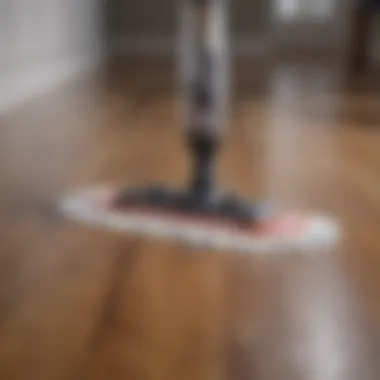
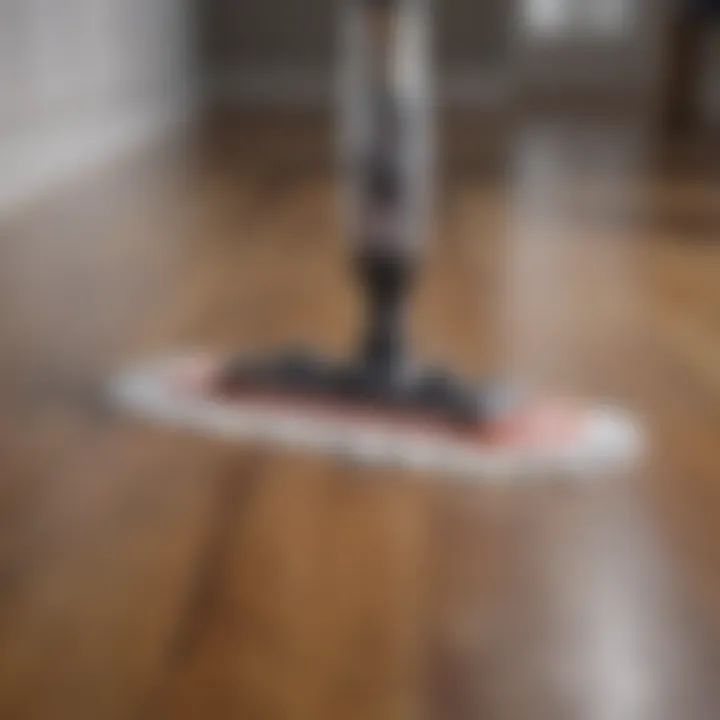
What's more, some reservoirs allow for mixing your own cleaning solutions. This flexibility can be highly advantageous, enabling you to customize the scents and effects to your preference. However, a smaller reservoir can lead to frequent trips to the sink, which can be annoying. Consider your cleaning routine to determine the best fit.
Spray Mechanism
The spray mechanism is, arguably, the heart of a spray mop. This component is responsible for dispersing the cleaning solution evenly across the floor, making sure it reaches the intended all the nooks and crannies. A well-designed spray nozzle will allow for adjustable spray patterns, from a fine mist to a more concentrated jet, adapting easily to different floor types and cleaning needs.
Furthermore, having a quick-release mechanism for the spray can be an invaluable feature for those quick clean-ups, allowing you to react swiftly to spills or messes. That said, a frequently clogging spray mechanism can become a significant frustration. Thus, it's essential to factor in ease of maintenance when assessing options.
How Spray Mops Operate
Delving into the functioning of spray mops reveals just how user-friendly yet effective they can be. The operation starts when the user fills the cleaning reservoir with the desired solution. With a simple squeeze of the handle or trigger, the mechanism releases the solution as a fine mist onto the floor. Then, the microfiber pad attached underneath the mop head takes center stage. It works hand in hand with the moisture to lift dirt and grime from the floor’s surface. Moreover, its unique texture enables it to effectively trap particles, ensuring a thorough clean.
By marrying both spray and wipe functions into one tool, spray mops drastically reduce the time traditionally spent on cleaning. This efficiency resonates well with busy homemakers and individuals who value cleanliness but lack the time or energy for continuous upkeep. It’s a clear illustration of how modern cleaning tools have revolutionized our approach to home maintenance.
"Emphasizing both comfort and efficiency, understanding these mechanics can transform your cleaning routine into a much more enjoyable task."
In summary, understanding the components and their functionality provides valuable insight into selecting the right spray mop. Each element plays a crucial role in enhancing your cleaning experience; hence, taking the time to understand their importance is a step toward making an informed purchase.
Microfiber Pads Explained
In this guide, understanding microfiber pads is crucial. They serve as the heart of spray mops, transforming an ordinary cleaning tool into a powerhouse for maintaining a spotless home. These pads are not just pieces of fabric; they embody a blend of innovative technology that significantly enhances cleaning efficiency while minimizing environmental impact. Exploring their construction and benefits reveals why they are becoming a go-to choice for households striving for cleanliness with less hassle.
Construction of Microfiber Pads
Microfiber pads are composed of ultra-fine polyester and polyamide fibers, which are woven together into a dense fabric. This unique structure is pivotal for its cleaning performance. The fibers in these pads are much finer than a human hair, which allows them to penetrate small gaps and effectively pick up dirt, dust, and grime. The combination of these synthetic materials creates a pad that is not only durable but also designed to withstand numerous washes without losing effectiveness.
Key components include:
- Fibers: The effective cleaning comes from the split fibers that create a larger surface area, trapping dirt more efficiently.
- Stitching: Proper stitching ensures durability and alignment of the fibers, aiding better dirt collection.
This construction contributes greatly to the longevity and effectiveness of microfiber pads. They often come in different thicknesses and styles tailored for various surfaces, enhancing their adaptability in various cleaning scenarios.
Benefits of Microfiber Technology
Microfiber technology brings a suite of benefits that are indispensable for modern cleaning practices.
Lightweight and Durable
The lightweight nature of microfiber pads makes them incredibly easy to handle. This characteristic is significant because it minimizes fatigue during cleaning sessions, allowing users to maintain their stamina while tackling larger tasks. Durability is another strong point; these pads can endure numerous cleaning sessions and washes while retaining their original shape and effectiveness.
- Advantages: The lightweight design means you can easily maneuver your mop without straining, and their longevity saves money in the long run as you won't need to replace them frequently.
- Considerations: However, care must be taken to avoid using harsh chemicals that can deteriorate the fibers over time.
Superior Absorbency
One of the most remarkable aspects of microfiber pads is their superior absorbency. They can hold up to seven times their weight in liquid, making them ideal for tackling spills as well as routine mopping. This absorbent quality not only helps in cleaning up messes more effectively but also reduces the amount of liquid you need to use compared to traditional methods.
- Advantages: By using less cleaning solution, you’re also reducing chemical use, contributing to a healthier environment both indoors and outdoors.
- Drawbacks: It's essential to ensure they're rinsed properly after use, as dried residue can impact absorbency over time.
Effective Dirt Trapping
Finally, microfiber pads excel in effective dirt trapping. The intricate fiber structure creates a physical barrier that captures dirt, dust, and allergens rather than just pushing them around. This feature plays a crucial role in keeping indoor air quality high while ensuring surfaces are left truly clean.
- Advantages: This dirt-trapping capability is particularly beneficial for households with pets or allergens, as it helps to keep surfaces cleaner and healthier.
- Challenges: Users should regularly wash or replace pads to maintain their dirt-trapping efficiency. Unattended pads can lead to streaks or residues on floors.
"The right microfiber pad can transform your cleaning approach from a mundane task into a quick and efficient routine, ensuring that every inch of your floor is spotless."
In summary, microfiber pads are not just an accessory for spray mops; they are a key element that enhances cleaning performance while promoting a more sustainable approach.
Understanding how these pads are constructed and their numerous benefits can aid homeowners and housewives in making informed decisions on their cleaning tools.
Comparing Spray Mops to Traditional Cleaning Methods
When evaluating the effectiveness of spray mops against classic cleaning tools, one can’t overlook the distinctive merits and limitations each approach brings to the table. Understanding these differences is crucial, especially for housewives and homeowners who strive for both efficiency and cleanliness in their living spaces. This section aims to dissect the aspects of spray mops and traditional cleaning methods, allowing readers to make informed choices suitable for their unique cleaning paradigms.
Efficiency in Cleaning
Spray mops can often turn cleaning chores from a tedious to a streamlined task. They’re designed for quick application, allowing users to cover larger areas in less time compared to traditional methods like mopping with buckets and cloths. For instance, consider a scenario where one must deal with a mess in a kitchen. With a spray mop, one can simply fill the reservoir with the preferred cleaning solution and spray away; no need to lug around heavy buckets or deal with wringing out wet mops.
- Time-Saving Aspect: Spray mops reduce cleaning time dramatically. Rather than waiting for a soaked mop to dry after each use, homeowners can immediately transition to other tasks once the floor is cleaned. The convenience of not having to change water adds to the efficiency, ensuring that you can consistently maintain a cleaner environment.
- Versatility: Thanks to the combination of spray and microfiber pads, these mops can tackle a variety of floor surfaces—from hardwood to tiles—with ease. Each surface requires different techniques, and spray mops usually come equipped with adjustable settings and distinct pads tailored for varying materials. Traditional mops, on the other hand, often lack this level of convenience.
- Water Conservation: Using a spray mop minimizes water usage significantly. Traditional mops can lead to saturating surfaces unnecessarily, while spray mops allow for targeted application, conserving water in the process.
"Cleaning tight spaces and reaching corners is almost seamless with spray mops, where traditional methods might struggle and leave a mess behind."
This efficiency rolls into the overall effectiveness, making spray mops not only a modern cleaning solution but often an essential component of contemporary housekeeping.
Cost Considerations
When it comes to the economics of cleaning tools, cost considerations can sway decisions significantly. Spray mops have garnered a reputation as a more economical long-term investment compared to traditional techniques.
- Initial Investment: While spray mops may come at a higher upfront cost compared to the basic mop-and-bucket set, it’s essential to recognize that you get what you pay for. The ease of use and versatility often justifies the investment. In contrast, standard mops require frequent purchasing of replacement items, including buckets and cleaning cloths, which can accumulate over time and drain the budget.
- Ongoing Maintenance: The maintenance cost associated with spray mops is often more straightforward. The microfiber pads are typically washable and can last numerous cycles, significantly reducing the need for constant replacements. In contrast, traditional mops might necessitate frequent replacements due to wear and tear, as well as the expense of mopping solutions.
- Long-Term Value: Consider factors like effectiveness and efficiency. Although the purchase price for a spray mop can be more considerable, the reduction in cleaning time and effort translates into savings in labor and stress, enhancing overall value.
In summary, comparing spray mops to traditional cleaning methods is not merely a matter of preference but rather involves weighing the practical aspects of efficiency, cost-effectiveness, and the evolving needs of maintaining a clean household. As the modern lifestyle demands more agility, spray mops often emerge as the favored tool, delivering a balance of performance and financial sensibility.
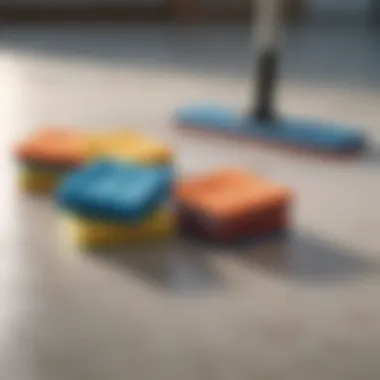
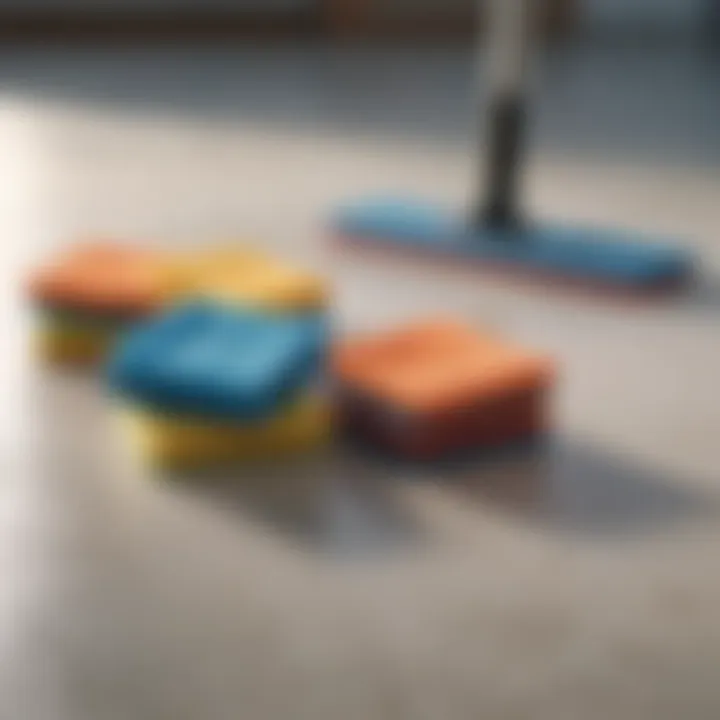
Selecting the Right Spray Mop
When it comes to choosing a spray mop, the selection process can feel overwhelming at times. With numerous models available on the market, understanding what features truly matter is essential. Selecting the right spray mop not only can make cleaning more efficient but it can also enhance the overall experience. Here, we will dive into some key characteristics you should pay attention to when picking a spray mop that suits your needs.
Key Features to Consider
Adjustable Handle
An adjustable handle is one of those oh-so-important features that can’t be overlooked. It allows users of various heights to use the spray mop comfortably. This can prevent back strain during cleaning, making it a significant addition for anyone who may have to clean lengthy areas.
In essence, the feature is a beneficial choice as it caters to a wider range of users. It can accommodate anyone from a petite person to someone heightly and make their cleaning experience comfortable.
However, do check the locking mechanism that secures it in place, ensuring it doesn’t slip down when you're in the thick of it. Good quality adjustable handles are not only designed for comfort but also offer sturdiness.
Spray Volume Control
Spray volume control is another noteworthy feature. This element allows you to adjust how much cleaning solution is dispensed with every spray, thus letting you tailor the amount based on your cleaning tasks. For instance, if you’re tackling a stubborn stain, you might want a little more solution; whereas, for routine cleaning, a light mist should suffice.
The key characteristic here is the flexibility it allows. Being able to regulate the spray effectively can save both time and product. Additionally, it can enhance the lifespan of your microfiber pads, as using the right amount of solution helps avoid excess residue that can build up on pads.
However, watch out for models where this control is overly complicated—it should be user-friendly and easy to understand.
Compatible Microfiber Pads
The compatibility of microfiber pads is an aspect that’s often taken for granted. Spray mops require pads that fit well and function efficiently. Not all microfiber pads are made the same, and those made for specific brands often provide the best cleaning experience.
The standout feature of compatible microfiber pads is their cleaning efficiency and effectiveness. Quality pads can easily trap dirt and grime, enhancing your cleaning sessions. One might think that a generic pad will suffice, but discovering that they don’t fit well or clean as effectively can result in frustration.
Just ensure to check what your chosen mop supports. While some mop brands offer diverse pads, others might be limited in options. It's best to stick with those that recommend their own pads to guarantee optimal performance.
Top Brands and Models
In the vast ocean of spray mops, there are a few brands that consistently rise to the top due to quality and innovation. Brands like Bissell, Swiffer, and O-Cedar are well-known for their impressive design and user-friendly features.
Each brand has several models tailored to different cleaning needs. For example:
- Bissell Easy Sweep - Known for its powerful spray action and adjustable handle.
- Swiffer WetJet - A popular choice for quick clean-ups with disposable pads, favored by many busy households.
- O-Cedar ProMist - Recognized for its dual-sided mop head that offers extended cleaning time without the need for constant pad changes.
When selecting a spray mop, take the time to look through customer reviews, as they often offer a wealth of insight regarding performance and durability.
Maintaining Your Spray Mop
Taking care of your spray mop is not just a best practice; it's a necessity that significantly impacts its performance and lifespan. Just like any tool, proper maintenance ensures that it continues to operate effectively without hiccups. Regular upkeep can save you money in the long run, reducing the need for replacements or repairs. A well-maintained spray mop contributes to cleaner surfaces and ultimately a healthier home environment. Moreover, understanding how to maintain this cleaning tool allows you to maximize its efficiency on various floor types, ensuring that every nook and cranny shines without spreading dirt or residue around.
Cleaning Microfiber Pads
The microfiber pads are arguably the most essential component of your spray mop. They are designed to trap dirt, dust, and grime far more effectively than traditional mop heads. However, to keep achieving high performance, these pads require regular cleaning and care.
- Wash Them Regularly: Ideally, microfiber pads should be washed after every use. Tossing them in the washing machine on a gentle cycle helps to keep them effective without damaging their fibers. Avoid using fabric softeners, as they can clog the tiny fibers, reducing absorbency.
- Inspect for Damage: Each time you clean the pads, take a moment to inspect them for wear and tear. If you notice excessive fraying or thinning, it might be time to replace them. Worn pads won't pick up dirt as effectively, negating the purpose of using a spray mop.
- Drying Considerations: Air-drying your microfiber pads is the best way to preserve their quality. High heat can damage the fibers, so hang them up or lay them flat to dry. Avoid leaving them in direct sunlight for too long.
Proper maintenance of the microfiber pads not only ensures effective cleaning but also prolongs the life of your spray mop, providing consistent results for your cleaning efforts.
Proper Storage Techniques
Storing your spray mop correctly is just as critical as cleaning it. Poor storage can lead to damage and inefficiency in your cleaning tool. Here are some strategies to consider:
- Keep It Upright: Whenever possible, store your spray mop in an upright position. This prevents bending or stressing the handle, which can cause long-term damage to the frame and other components.
- Avoid Damp Conditions: Store your mop in a dry location. Moist environments can cause mold or mildew to develop on the microfiber pads, defeating the purpose of cleaning. A well-ventilated area will be more beneficial for both the mop and pads.
- Regularly Check Storage Conditions: Take a moment occasionally to check where you store your mop. Ensure that it’s free from any other cleaning supplies that could drip or leak onto it, causing potential contamination.
Remember: A clean mop leads to a cleaner home.
Taking the time to keep your spray mop in top shape pays off significantly in the long run.
Best Practices for Effective Cleaning
When it comes to keeping your home spick-and-span, adopting best practices for cleaning is essential. Using a spray mop with microfiber pads elevates your cleaning game, offering a streamlined approach compared to traditional methods. This section dives into crucial elements that ensure effective cleaning, showcasing specific practices that can make a noticeable difference.
Preparation Before Use
Preparation is half the battle won. Before you even start mopping, a little groundwork can save you time and effort. Here are some key things to keep in mind:
- Clear the Area: Move furniture and other items out of the way. This ensures a thorough cleaning without any missed spots.
- Sweep or Vacuum: Before using a spray mop, it's important to sweep or vacuum the floor. Dust and debris can become trapped in the microfiber, causing scratches or spreading dirt around rather than removing it.
- Check the Pad: Ensure the microfiber pad is clean and in good condition. Worn-out pads may not pick up moisture or dirt effectively.
Overall, taking these initial steps can set the stage for a cleaning process that’s not only smoother but more effective.
Techniques for Various Floors
Hardwood Floors
Hardwood floors are cherished for their elegance and durability. However, cleaning them requires a careful touch. When using a spray mop, consider the following:
- Gentle Clean: Microfiber pads are excellent for hardwood because they trap dirt without scratching the surface. Always use a damp mop instead of soaking the floor to avoid damage.
- Use Appropriate Cleaner: Opt for a cleaner specifically designed for hardwood. This respects the finish and helps maintain the wood's natural shine.
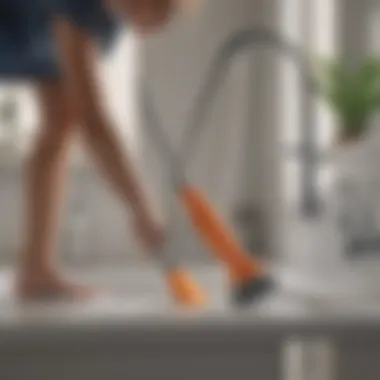
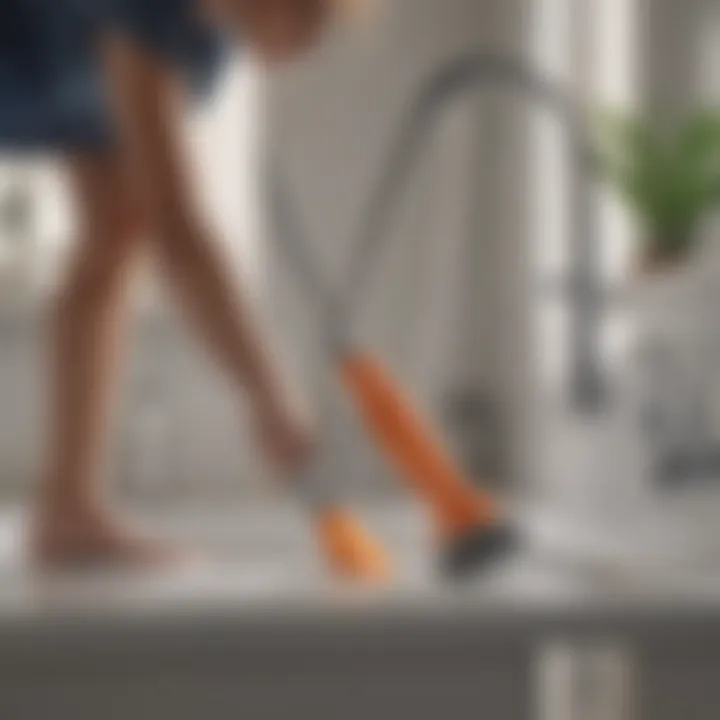
Incorporating these tactics makes hardwood floors not just shiny but also extends their life, keeping them looking good for years.
Tile and Laminate
Tile and laminate flooring makes cleaning a breeze. These surfaces are resistant to stains and moisture, making them ideal for homes with kids and pets. Here are some techniques:
- Thoroughly Wet the Pad: For tile, use a bit more moisture when mopping. This helps lift grime that may settle in the grout lines.
- Use a Multi-Surface Cleaner: Laminate benefits from a milder cleaner mean to avoid damage.
Properly addressing these surfaces ensures you maintain their integrity while enjoying a clean home.
Carpet Considerations
While spray mops are ideal for hard surfaces, carpet cleaning requires a different set of tools and techniques. Here’s how to approach it:
- Vacuum Before You Mop: Always vacuum carpets to remove loose dirt before attempting any cleaning method.
- Spot Cleaning: For stains, hot water extraction or specialized carpet cleaners may be necessary. A microfiber spray mop may not suffice for deeper cleaning yet aids in general maintenance.
Realizing the unique characteristics of carpets and how they differ from hard surfaces is crucial to prolonging their life and maintaining a fresh, clean look across your home.
Final Takeaway: Adhering to best practices tailored for your specific flooring type ensures not just cleanliness but enhances longevity, ultimately contributing to a healthier living environment.
Troubleshooting Common Issues
Understanding how to tackle common issues with spray mops is essential for ensuring they work effectively over time. Whether it's dealing with a stubborn spray mechanism or the wear and tear of microfiber pads, knowing the solutions can prolong the life of these cleaning devices. This section unpacks some typical problems users might encounter and offers practical ways to resolve them.
Spray Mechanism Blockages
Blocked spray mechanisms can be a real headache when you’re in the middle of cleaning. If the nozzle is clogged, the solution won’t spray out as it should, leaving your floors far from spotless.
Reasons for Blockage:
- Residue Build-up: Over time, dirt and cleaning solution residue can accumulate in the nozzle. This often leads to blockages.
- Wrong Solution Use: Using a product that's not designed for your mop can lead to sticky deposits. Always check recommended solutions.
Troubleshooting Steps:
- Check for Clogs: If you notice a sputtering spray, begin by checking if the nozzle is clogged. A simple tap or shake can sometimes dislodge debris.
- Clean the Nozzle: Remove the nozzle carefully, if possible. Soaking it in warm, soapy water can help dissolve built-up grime. Rinse thoroughly and allow it to dry before re-attaching.
- Systematic Cleaning: After reassembly, run plain water through the system to ensure clear flow. If the sprayer remains ineffective, consider replacing the nozzle.
Effective maintenance reduces the chance of malfunctioning. Invest time in checking and cleaning your spray mop periodically.
Microfiber Pad Wear and Tear
Microfiber pads are the heart of any spray mop's cleaning efficiency, but like anything else, they don't last forever. Understanding the signs of wear can prevent disappointing cleaning outcomes.
Indicators of Wear:
- Frayed Edges: If the edges of the pad start to look rough, it’s a sign it’s time for a replacement.
- Reduced Absorbency: An old pad may not soak up solutions like it used to, failing at its basic job.
- Staining: Persistent stains on the pads after washing indicate that they are no longer effective for cleaning.
Managing Wear:
- Regular Inspections: After each cleaning session, take a quick glance at the microfiber pad. Don’t wait until it’s in shambles.
- Proper Washing: Washing guidelines are crucial. Use warm water and avoid fabric softeners as they can coat the fibers and decrease their ability to clean.
- Rotation Strategy: If you have multiple pads, it’s wise to rotate their use. This technique can help extend the lifespan of each pad, ensuring you always have a fresh one on hand when needed.
Taking these steps can ensure that your spray mop remains an effective cleaning tool for a long time.
Environmental Impact of Spray Mops
In today's world, where sustainability practices influence purchasing decisions, understanding the environmental impact of cleaning tools like spray mops is crucial. Not only do these tools facilitate efficient cleaning, but they also play a role in reducing waste and chemical exposure in our homes. By exploring the sustainable aspects of microfiber pads and examining how spray mops minimize harmful substances, we can make informed choices that contribute to a cleaner planet.
Sustainability of Microfiber Pads
Microfiber pads are at the forefront of eco-friendly cleaning solutions. Unlike traditional mop materials, which often end up in landfills, microfiber can be washed and reused multiple times. This longevity is where the environmental benefits shine. Here are some notable points:
- Longevity: Microfiber pads can typically last for hundreds of wash cycles. This durability significantly reduces the need for frequent replacements, thereby lessening plastic waste.
- Material Composition: Most microfiber is made from a blend of polyester and polyamide, which are synthetic fibers. While there are certain environmental concerns regarding the production of these materials, many manufacturers are innovating with recycled plastics to produce microfiber pads. This repurposing reduces overall plastic pollution.
- Energy Savings: Using microfiber pads means less water and energy consumption compared to conventional mops and cloths. They require lower wash temperatures and fewer rinses, contributing to overall energy efficiency in household upkeep.
"Microfiber pads, when cared for properly, can last for years, making them not only a smart cleaning choice but also a sustainable one."
Reducing Chemical Use
One of the notable advantages of using spray mops with microfiber pads is the significant reduction in chemical cleaning agents. Here’s how they help:
- Effective Cleaning with Water: Microfiber is adept at trapping dirt, dust, and bacteria, often eliminating the need for harsh chemicals. Many households rely solely on water for cleaning with microfiber pads, which minimizes exposure to potentially harmful substances.
- Less Pollution: Traditional mop systems often require a slew of chemical products to tackle stubborn stains or disinfect surfaces. By cutting out these chemicals, we reduce the likelihood of chemical run-off entering the water supply, which can harm aquatic ecosystems.
- Healthier Living Spaces: Using fewer chemicals not only benefits the environment but also creates a healthier indoor atmosphere. Households experience less volatile organic compounds (VOCs) and improved air quality, especially critical for families with young children or pets.
Incorporating spray mops into your cleaning routine is about much more than mere convenience. It’s an active choice towards promoting sustainability while maintaining a clean and safe living environment.
Epilogue
In today’s world of household cleaning, understanding the role and advantages of spray mops with microfiber pads can't be overstated. This guide aims to consolidate the key insights, allowing readers—especially housewives and homeowners—to appreciate the practicality and efficiency of these innovative tools. After exploring various facets like mechanics, maintenance, and environmental considerations, it’s evident that adopting spray mops can transform cleaning routines.
One crucial element covered is the benefits of using microfiber pads. Not only do they provide superior dirt trapping and retention capabilities, but their lightweight design makes maneuvering a breeze. Households with children or pets often face unique messes, and investing in a quality spray mop can make clean-up more manageable and less time-consuming.
Yet, alongside the benefits, several considerations are also important. Choosing the right spray mop involves evaluating features such as adjustable handles and spray volume controls. These elements can significantly enhance the user experience. Plus, with the right care and maintenance, microfiber pads can last much longer, leading to cost savings over time.
Additionally, embracing sustainable cleaning practices through the use of eco-friendly microfiber pads is more critical than ever. By reducing chemical use during the cleaning process, households can minimize their environmental footprint while ensuring that their living spaces remain fresh and clean.
"Investing in a spray mop is not just a purchase; it's a step towards efficient, eco-friendly household maintenance that adapts to modern needs."
Overall, this guide comes full circle by emphasizing that switching to spray mops isn't merely about the tool itself but rather the lifestyle it supports. With the right information and resources, homeowners can make informed decisions that lead to a cleaner home and a more enjoyable cleaning experience.







